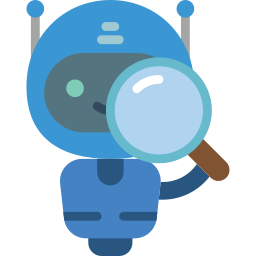AI/ML
Artificial intelligence (AI) is a common enough term these days, and most people know it refers to technology that mimics human intelligence. It refers to machines that have not been pre-programmed, and therefore carry out tasks by learning how to do so through algorithms. This is where machine learning (ML) becomes important. ML is used to describe the process of giving AI access to data and past tasks and letting it learn for itself how to manage new tasks. Because ML uses only its own past data, it can only be used for specific functions, some of which are search engine algorithms, spam folders for email, etc.

Prediction and Forecasting Solutions

Anomaly and Outlier Detection Solutions

Federated AI
When we help you with the digital transformation of your business, we assess what AI and ML will work best for you at the cheapest cost. A great example of a useful AI tool is information capture software, such as the Kodak Alaris. With information capture software, you can scan hard copy documents and convert them to a digital format. Advances in information capture software have also led to its use of Robotic Process Automation, meaning that it not only converts paper documents to digital, but also enhances them so they are easy to read, classifies them (e.g., invoice, patient record, etc.), extracts data to use as an index, and validates whether data is complete and accurate. This frees up a great deal of time for employees and is just one example of how we can help you use AI and ML to increase your business’s productivity.


Prediction and Forecasting Solutions
Predictive modelling is a type of AI that uses statistics from existing data to predict future outcomes. It analyses data from a wide range of factors in a specific situation, and then uses probability to anticipate specific outcomes for that situation. Forecasting, on the other hand, uses data to identify trends, both existing and upcoming, in a particular market. Rather than use data from several factors of a situation to form a prediction, forecasting relies on the statistics generated from past and present results of a single event or task—this data then indicates the forecasted trend. For example, using Company A’s ROI figures from the past 10 years, one can forecast a trend in the increase of Company A’s ROI for the coming year. However, using a combination of Company A’s sales, product, customer data, etc., such as the introduction of a new, market-leading product or better customer service policies, one can predict a specific increase in Company A’s ROI related to factors other than previous ROI figures. This is particularly useful when the prediction falls outside of the forecasted trend, as both sets of information give the company a more complete picture moving forward.
Anomaly and Outlier Detection Solutions
Anomalies or outliers, whichever you prefer to call them, are data points that don’t match the rest of the data. On a data graph, they are a dot or figure far away from any of the other values, a divergence from otherwise well-structured data. Detecting these anomalies has proven difficult in the past, but with recent development in technologies and AI, it is becoming much easier. Detection is also important for preventative measures—you can look at the outlier and decide whether it is inconsequential or will become a problem you have to solve later. If that’s the case, you are better off getting on top of it right away so you can avoid any losses in your business.
It is the detection of potentially problematic anomalies that we specialise in. We have a range of tools and knowledge that allows us to find outliers that suggest your business may be facing a problem in the future, and we help you solve that problem before you even come to it, or lose money and time because of it. For example, we can find anomalies in banks or financial institutions that can help prevent potential fraud, or outlying changes in manufacturing equipment’s performance that can prevent damaged machinery or having to shut down assembly lines. Whatever your business, whichever industry you operate in, we can help you fix problems before they even become problems..


Federated AI
Federated learning is a machine learning technique that enables devices to share updates to a shared model. This shared model is usually cloud-connected to an app or website. The update shared from each device will include a summary of data describing how the person used the site or app. These updates are encrypted in order to protect the user’s privacy, and the updated model is used to improve the app or site for future users.
Recording how people use your app or website can be a key tool in improving the interface and increasing customer satisfaction. However, with data privacy becoming more of a concern to the general public, it is important you collect this data in a way that doesn’t identify individual users or track anybody’s digital movements. Our Federated AI solutions accomplish this by ensuring the data doesn’t leave the owner’s device, even as it’s used for improvement purposes. We get you the information you need to improve your apps and websites, while respecting the privacy of your customers and strictly adhering to privacy laws.
